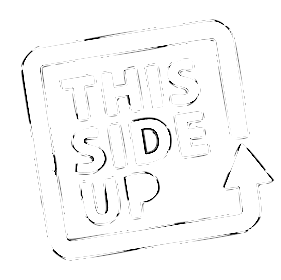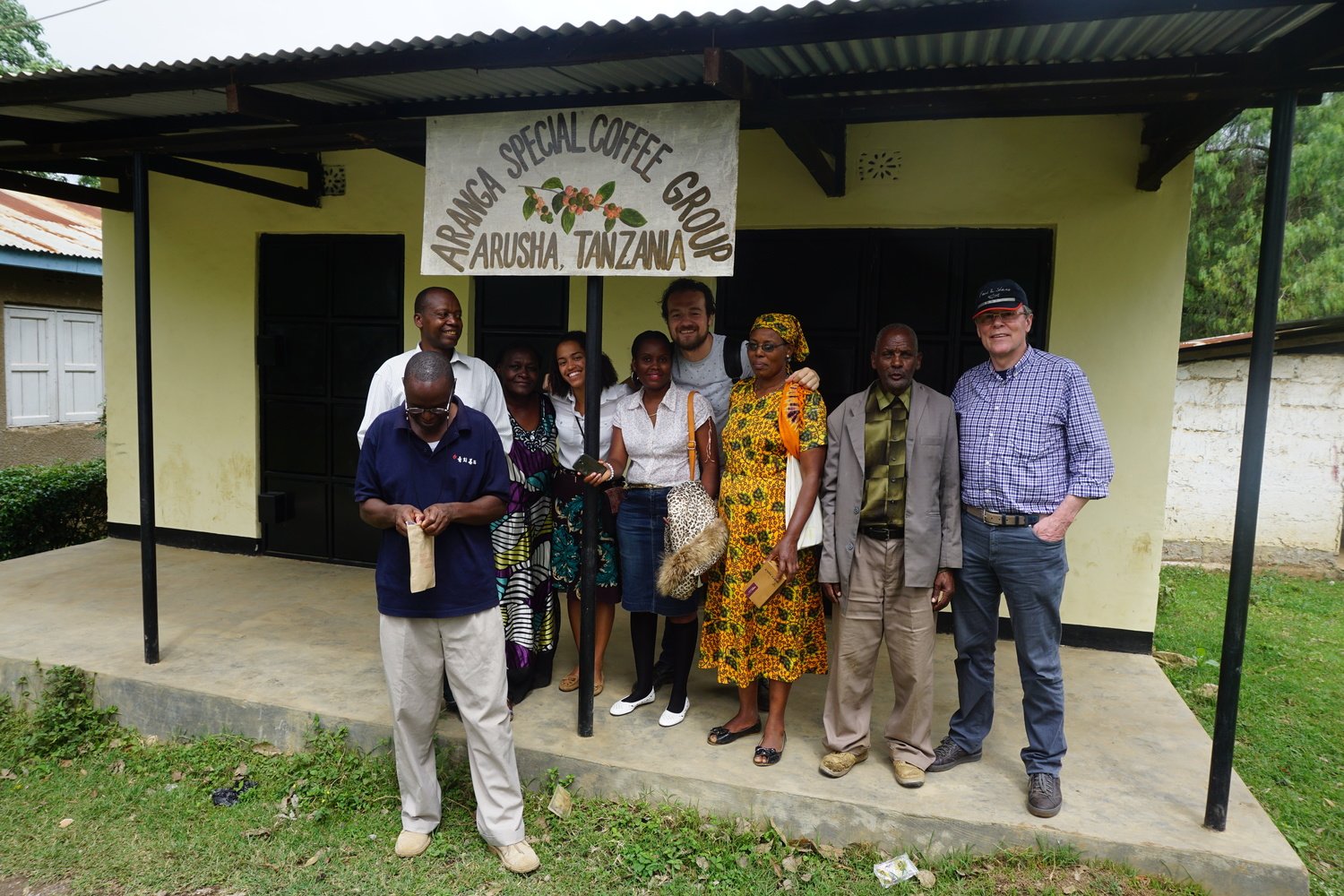The group whose vision spread
The Aranga Coffee Group is a testament to the initiative and determination of smallholder farmers. Ten founding members broke away from a mismanaged cooperative to find better markets and establish a more transparent and democratic governing system. The members – now 28 in number – are true artisans of their coffee and drink it themselves, which is a rarity for the East African region, outside of Ethiopia. Aranga members are subsistence farmers. Each family has 0.5 to 2 acres which they farm in the traditional local method of intercropping. Coffee trees are interspersed with banana trees, whose broad leaves provide sufficient shade from the equatorial sun.
Aranga has a special place in our portfolio. Meeting Rebecca in 2014 and starting our import adventure the year after has taught us more about the difficulties of working with smallholder groups directly than any other relationship. Together we have invested in the coop's drying infrastructure, moisture measurement equipment, and harvesting process. Due to an increasingly open and trustful relationship and the support from a few key roaster partners, we have managed to bring this coffee to its full potential. Aranga now commands the highest prices of any locally run farm in the region and the word has spread - Majirani, which means “neighbours” in Swahili, is a new group of outgrower farmers that receive Aranga’s support and is the best testimony to the group’s success.
CULTIVARS:
Arabica Bourbon (Jackson, Mbirizi) and Kent
ALTITUDE:
1,500 - 1,700 meters above sea level
NOTABLE:
local organic certification (since 2016) by the Tanzania Organic Agriculture Movement (TOAM), shade-grown, farmer owned and farmer-run cooperative, actively seeks participation of women in coop activities.
PROCESSING:
Double wet fermentation: Cherries are depulped using simple hand-pulpers and strictly washed the same day they are picked. They are then double wet-fermented (2x 18 hours), shade dried, and then sun dried on raised beds. This year, we are centralising these beds to achieve more uniform drying.
KEY ACHIEVEMENTS:
2015: first ever independent export, planted three acres of new coffee due to success of first export
2016: consolidated drying beds from 12 to 4 locations to stabilise drying, introduced moisture meter
2017: formed new partnership with agronomist and hired a local friend for communication between the coop and us during the harvest.
2018: 40% more coffee imported, prepayment to farmers realised.
2019: Reserved part of sales price for Rebecca, co-shipped with Communal Shamba and started exchange between these two cooperatives.
2020: Aranga’s neighbours who had been in line to join the farmer group finally decided to form their own farmer group: Majirani - aptly meaning “neighbours”. Aranga proper sold most of its coffee to another buyer in Germany for a higher price than we offered, which we view as an immense victory!
2021: through training and wet milling support from Aranga, Majirani managed to upgrade its cup score significantly to almost on par with Aranga.
2022: Record import from Aranga and Majirani and record prices. Together with the German buyer, over 150 bags were produced for an average of just under 6 USD / kg farmgate price, unheard of in Tanzania.
TASTIFY™ CUPPING NOTES :
PHOTO GALLERY:
You may use these images freely to promote Aranga among your customers.
BACKGROUND
The Aranga farmers live on the lush green slopes of Mt. Meru in northern Tanzania, not far from the safari destination Arusha National Park. The fertile, volcanic soil provides the ideal environment for growing the fragile Arabica plants without much artificial intervention. The Kent and Bourbon cultivars were first introduced by German colonists more than a hundred years ago, and many of these ancient plants survived despite years of abandonment – the wide girth of the trunks of some of the coffee trees are a testament to their age. More importantly, the roots of these old trees run deep and are able to effectively absorb volcanic minerals that make for healthy and full-flavoured cherries with complex acidities.
The Aranga Coffee Group is a testament to the initiative and determination of small holder farmers. Ten founding members broke away from a mismanaged cooperative to find better markets and establish a more transparent and democratic governing system. Formally registered in 2002, the group enshrined weekly meetings to keep all members informed of the group’s business doings, make decisions collectively, and meet with a local agronomist to learn improved farming techniques. Over a decade later, these investments have paid off. Aranga boasts some of the best coffee to be found anywhere in Tanzania and has a remarkably successful and transparent business. The members – now 28 in number – are true artisans of their coffee and drink it themselves, which is a rarity for the East African region, outside of Ethiopia. Aranga members are subsistence farmers. Each family has 0.5 to 2 acres which they farm in the traditional local method of intercropping. Coffee trees are interspersed with banana trees, whose broad leaves provide sufficient shade from the equatorial sun.
The Aranga Coffee Group is also unusual in its involvement of women. In Tanzania, men traditionally own coffee trees. At Aranga, women make up 11 of the 28 members and hold several key leadership positions.
Rebecca Trupin met the Aranga group in 2012. Rebecca is half-Tanzanian, half-American, and has roots in the neighboring Kilimanjaro region. She was looking for successful cooperative models to help farmers in her mother’s village, and the Aranga group readily agreed to help, meeting with Rebecca’s farmers and sharing their constitution and methods.
Rebecca has been looking for ways to connect Aranga and other farmer groups to buyers in the US and Europe. She met Lennart in early 2014. The relationship started with Lennart simply helping out with explaining things like coffee contracts and the shipping process, still thinking that Rebecca was to import coffee to the United States. After sending a sample in March 2014 that yielded promising results, Rebecca was even more driven to document Aranga’s activities and work towards the first export. When she then sent the 2015 season’s sample to Lennart and Paul (Sweet Cup) in February, they were blown away by the cup’s floral aromas, dark berry acidities, and especially its full and intense vanilla mouthfeel. This is when we decided to offer Aranga in Europe. Our occasional phone calls evolved into intensive cooperation in two years’ time, and we’re proud to have the coffee in our warehouse to show for it now!
The first Aranga shipment successfully made it to Amsterdam in June of 2015. Aranga used the premium from this shipment for the cooperative’s development fund which went towards purchasing the land they currently rent for their demonstration plot and nursery. Another significant project going forward is improving and standardizing Aranga’s coffee processing system. The group has achieved excellent quality without large scale machinery or a washing station – each farmer wet-processes coffee individually before the cooperative comes together to bring coffee to the miller. This shows their potential to achieve even greater results with good equipment.
We are getting started right away – at a meeting during Lennart's visit in January, the farmers decided that This Side Up's 2016 premium will be used to centralize the group's processing activities: instead of processing at each farmer's house individually, they will create four pulping, washing and drying stations by expanding some of the members' current stations. We will also finance a moisture meter that will further aid the group in homogenizing the humidity levels of the parchment coffee before it is shipped to the dry mill. We expect that these measures will result in a significant increase in the amount of AA and AB grades that can be produced next season.
- Rebecca Trupin
























